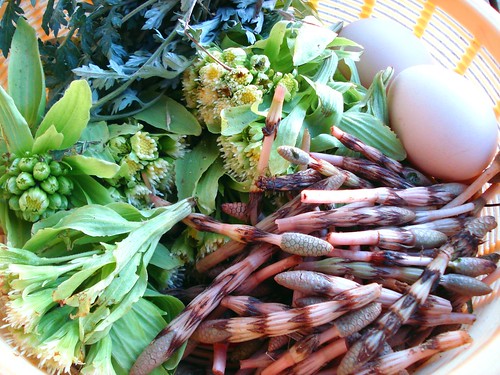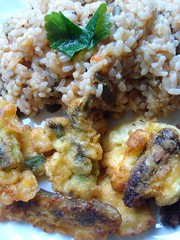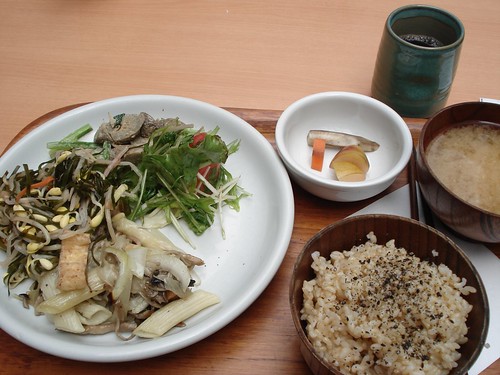"Moonshine" Umeshu
 During my stay in Japan I got to taste some wonderful Umeshu, homemade by a nice Obachan with Ume plums from her garden. Usually I am not very enthusiastic about sweet liqueurs, but that was something special: smooth, with an intense but natural plum flavour and not too sweet. The plums were still swimming in the liqueur and they tasted great, especially with some vanilla icecream ;)
During my stay in Japan I got to taste some wonderful Umeshu, homemade by a nice Obachan with Ume plums from her garden. Usually I am not very enthusiastic about sweet liqueurs, but that was something special: smooth, with an intense but natural plum flavour and not too sweet. The plums were still swimming in the liqueur and they tasted great, especially with some vanilla icecream ;)
Back home in Berlin, I recently found green, unripe plums (or mirabelles?) called "Can Erik" at a Turkish vegetable store. They looked pretty much like the Japanese Ume used for Umeshu. So I gave it a try, bought a bag full of the plums, brown sugar and a bottle of Japanese Sake (couldn't find any Shochu unfortunately) and a big jar and headed home to attempt my first steps of "moonshining". (Hehe, not really, since I didn't distill the Sake by myself - however, I like the idea ;)...)
First of all I cleaned the plums and the jar thoroughly with hot water. Then I wiped the plums with a towel and placed them in the jar. I filled in about 750g of brown sugar 
and 1 liter of Sake,
closed the jar,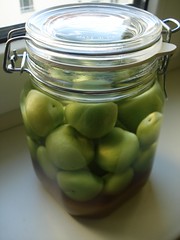
put it on my shelf 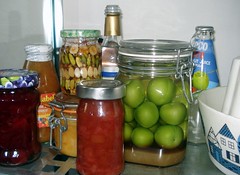
and now I have to wait for at least 3 month (better: 1 year!) until I find out whether it tastes right or not.. I just hope it works with Sake, since Shochu, the alcohol that is usually used for Umeshu is much stronger.
We'll see.. I'll keep you updated.
Till then: Kampai!
